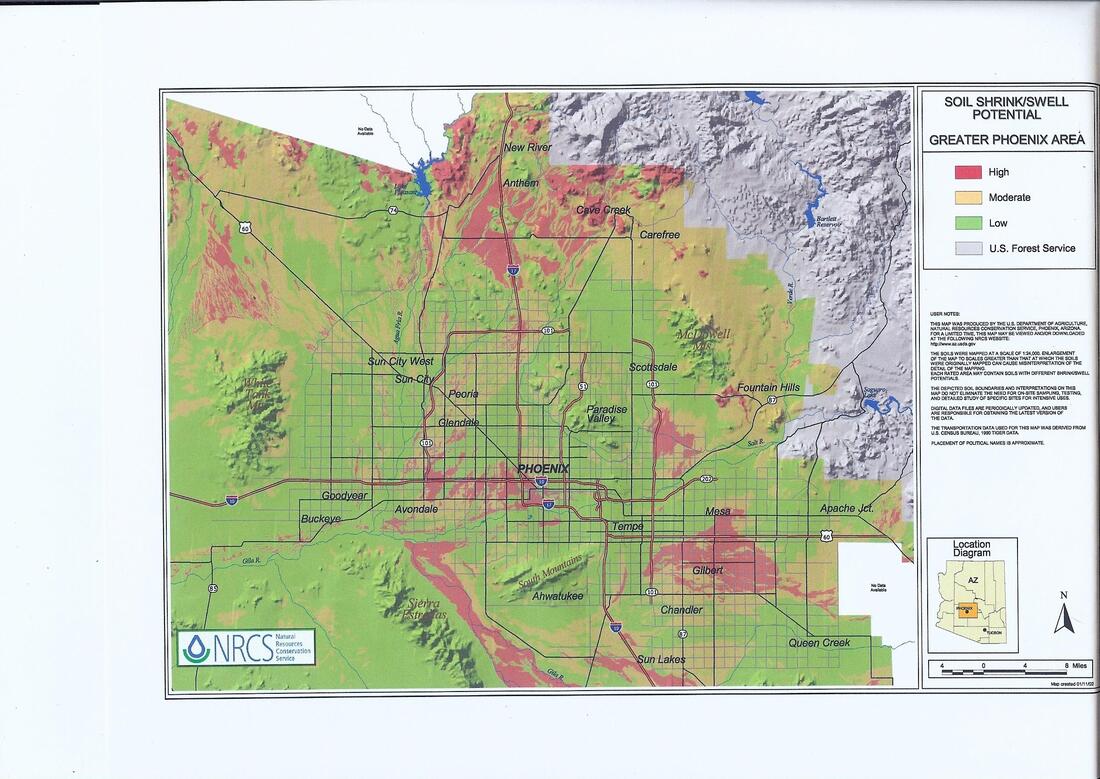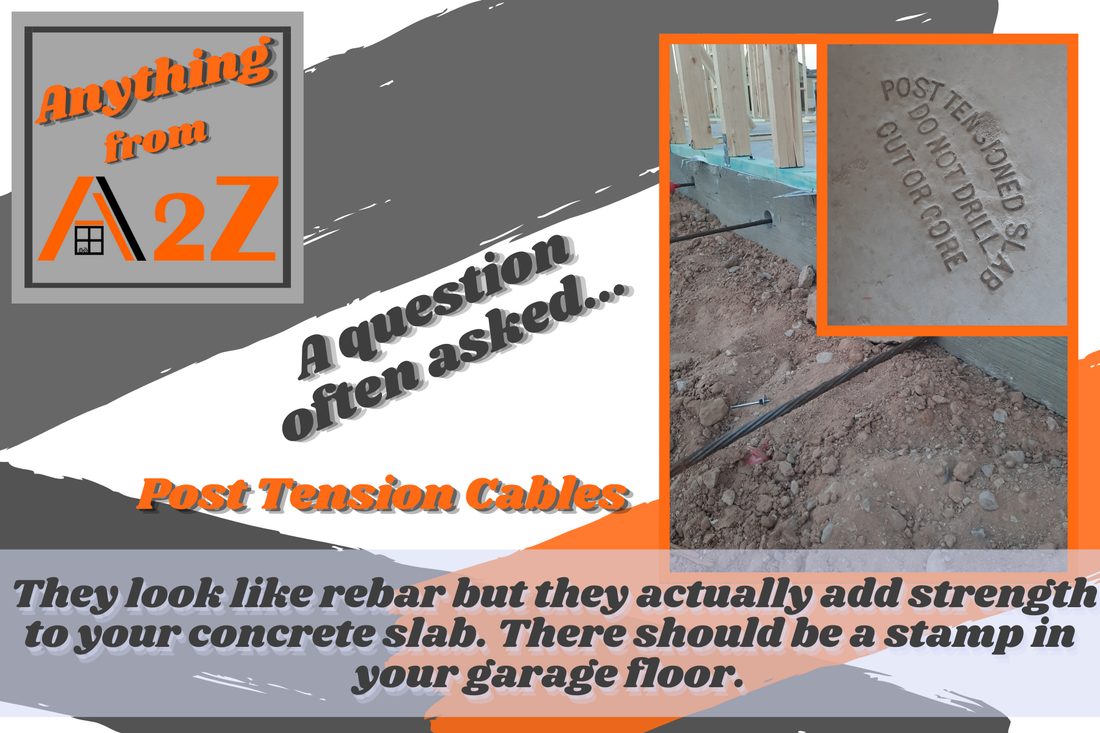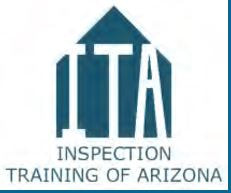 What are post tension cables? Post–tension cables are used in concrete construction to allow thinner slabs and greater span lengths between support columns. These cables, composed of steel wires inserted into a plastic sheath, are subsequently "tensioned" and grouted after the concrete is poured. POST TENSION SLABS - You may not know it but if you own a modern home you probably have a post-tension slab. A post-tension slab is a slab of concrete without traditional stem type footings instead there is a series of cables or tendons that run the length of the slab. The concrete is allowed to cure to about 75% of the way, at which point post-tensioning occurs. Each of the tendons in the post-tension slab is pulled tight, using a hydraulic jack. The tensing of the cables occurs after the concrete has mostly cured, hence the term “post-tension.” The tendons are usually pulled to a tension of 25,000 pounds per square inch. Once the cables have reached the designated tension, they are anchored in the concrete, and the slab is allowed to fully cure. Many modern homes are built on a post-tension slab, which serves as an excellent foundation. This method of pre-stressing concrete is especially useful in areas where the soil expands and contracts relative to weather conditions. Overall, a post-tension slab is stronger with less concrete and is less likely to shift and cause flooring problems in your home. STEM FOOTING SLABS - A traditional home slab uses the stem footing method. This method consists of a footing trench around the perimeter of the slab and rebar that is used to prevent movement during soil shifts. There is also a stem or vertical wall around the perimeter poured into the footing trench to act as a support for the supporting the perimeter walls and roof. This method of slab while tried and true uses more concrete to maintain the needed strength and is more susceptible to shifts in your flooring where cracks appear. Post tension slabs are used in many parts of the country where the soil has high shrink / swell potential, also commonly know as expansive soil because they resist soil movement. Many parts of the Phoenix area have soil that is expansive and exhibits a high shrink / swell potential. The USDA has published a shrink / swell potential map for Phoenix which identifies the cities or towns most affected by this condition. The soil in Arizona, in some parts of the state, has "clay like" tendencies. Specific areas of the state are prone to "clay like" tendencies, sometimes referred to as "EXPANSIVE SOIL". It is not unusual for a home/building in Arizona to exhibit signs of settling by evidence of cracks in walls, doorways, garage floors, patio decks, drive ways, roof tie-ins and a number of additional locations in, on and around the home/building. The Registrar Of Contractors, sites any gap/crack in foundations or walls etc. That exceeds 3/16th of an inch in width is considered unacceptable and requires the attention of professionals to examine the cause of such cracks. What happens when a post tension cable breaks? Post-tension reinforcement are stranded cables that are contained typically in a plastic sheaths...Therefore, when a post-tension cable fails it is an aggressive catastrophic failure typically shooting out the end of the building and blowing out the concrete on either the top or the bottom of the deck. Is post tension better than rebar? Strength. Post-tensioned concrete is stronger and more flexible than conventional steel-reinforced concrete. According to the Concrete Network, post-tensioning helps reduce cracking from shrinkage as the concrete dries, and holds together any cracks that do form. Check out this informative article to learn more! https://www.concretenetwork.com/post-tension/basics.html
0 Comments
Leave a Reply. |
AuthorBringing 10+ years of plumbing experience to educate and bring awareness to home owners regarding Home Inspections. Archives
June 2021
Categories
All
|



 RSS Feed
RSS Feed


